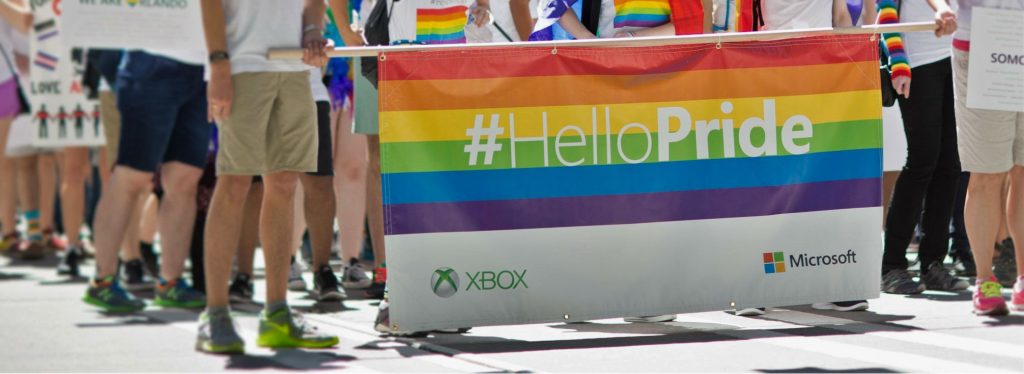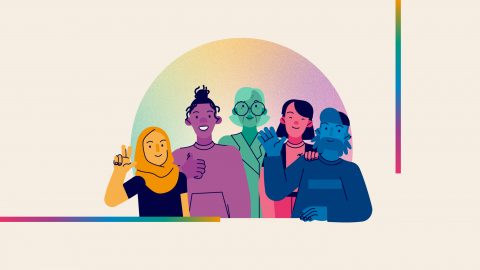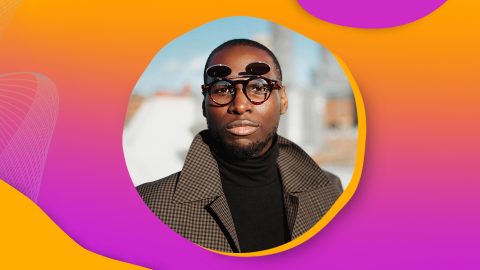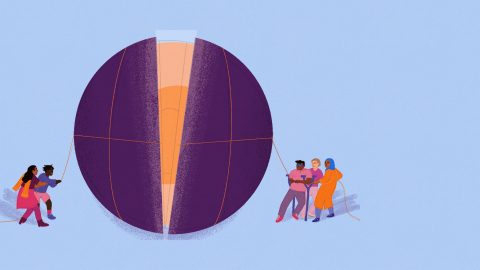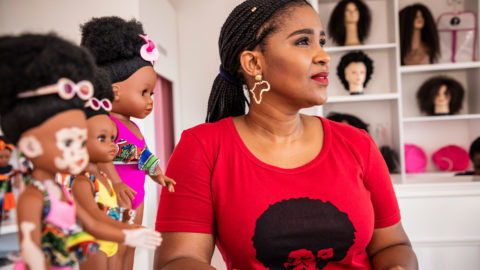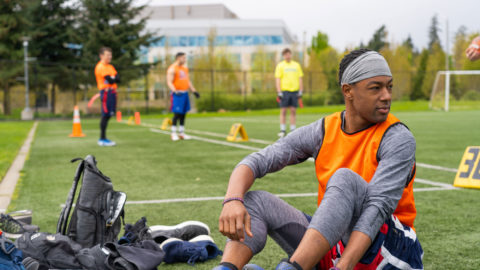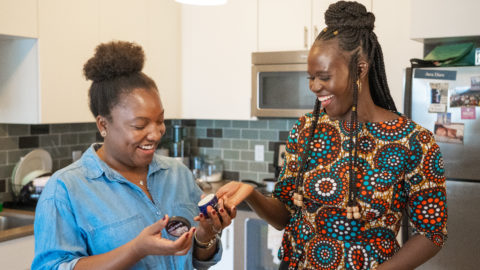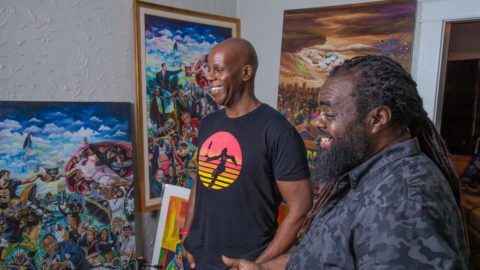#HelloPride: ‘We’re everybody’s company’
Microsoft’s LGBT+ group is about being who you are
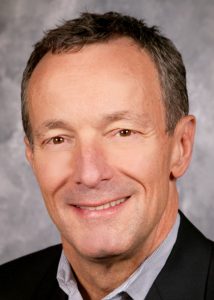
Dan Bross remembers the meeting as both traumatic and a turning point in his life: It was 1984. He was working for an energy company in Houston, where some of the city’s business leaders were trying to repeal a new ordinance banning the discrimination of city employees based on their sexual orientation.
Bross was gay, and he also valued his career. So he nodded, silently feigning approval, as his company’s senior executives discussed their support of repealing the law. He still recalls their jokes, their hate — and his immediate decision to join the campaign that was fighting for equality.
Back then, if someone told him he could feel accepted and supported in the corporate world, he wouldn’t have believed it. But in his 18 years at Microsoft, he’s felt completely able to be who he is.
“The first day I showed up for work at Microsoft, I put a picture of my partner up at my desk, and I’ve never taken it off,” says Bross, senior director of Business and Corporate Responsibility, who married his partner in 2013. “Everyone has been 100 percent supportive. I can’t think of even one uncomfortable moment.”
Bross is executive co-sponsor of GLEAM, Microsoft’s employee resource group for gay, lesbian, bisexual, transgender employees. It offers employees a broad network of support and a platform for taking a stand on issues they care deeply about, getting involved and making a difference.
“The mission of GLEAM is really to support Microsoft employees, helping them with career development, and helping to advance equality, celebrate diversity and champion Microsoft’s engagement in the LGBT+ community,” Bross says. “GLEAM is also a place where employees can come together and effect change.”
The first day I showed up for work at Microsoft, I put a picture of my partner up on my desk, and I’ve never taken it off.
GLEAM first formed in 1993 with about a dozen employees; it now has well over 1,000 members around the world. Though the name stands for Gay and Lesbian Employees at Microsoft, it includes employees in the broader LGBT community, those who count themselves as allies and any others who want to join.
The group is an instrumental part of the culture of diversity and inclusion in a company that is consistently ranked as a top place to work for LGBT equality.
At Microsoft, diversity and inclusion are considered key to future success, enriching employees’ lives and leading to better products, Bross says. Senior leaders “are well aware of strong support the employee base broadly has on issues related to human rights, equality and diversity and inclusion, including LGBT issues. Our employees care deeply about LGBT equality, and that employee support extends far beyond the 1,500 to 1,600 members of GLEAM.”
Naomi Boyd knew she wanted to join GLEAM even before Microsoft hired her as a full-time employee four years ago. She’d moved to Boston and didn’t know many people there, so she saw it as “a great way to meet new people and get involved in community events and volunteerism.”
She quickly became interested in becoming more deeply involved. Now she’s the interim chair of GLEAM worldwide and plans on running to keep that top leadership role in an upcoming election.
“I think when I came out and I realized that my company supported me in being my authentic self, I knew that GLEAM would be a really great fit,” Boyd says. “Our company accepts us as who we are, but not everyone feels comfortable. Having this group gives people a safe space to be themselves and connect with other employees and do great things at the company.”
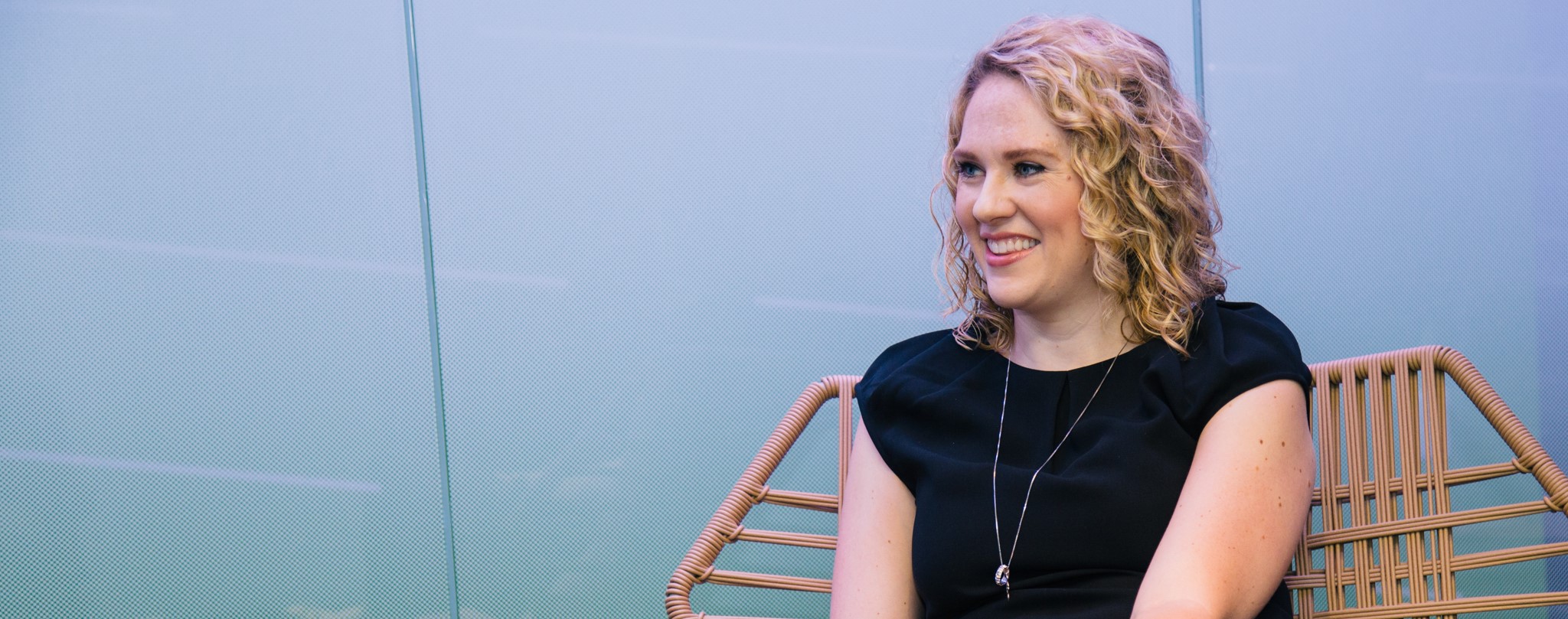
Boyd, who works in the Windows and Devices Group and is also co-chair of outreach for GLEAM, is proud of the group’s many accomplishments, including awarding scholarships to LGBT youth and organizing Pride events around the world, as well as its outreach to interns, networking opportunities and strong support of Microsoft’s efforts to bring diverse talent to the company.
“None of these accomplishments would be possible without the hard work of our members, the current Worldwide GLEAM Board of Directors and our Global Diversity and Inclusion team,” Boyd says. “I am so incredibly grateful to work with such dedicated, thoughtful and talented people.”
Earlier this year, Boyd worked to make sure Microsoft recruiters came to the Lesbians Who Tech Summit in San Francisco to connect with the many talented people who attended. She also has a front-row seat to GLEAM’s momentum in other countries — the new chapters forming in Brazil, for example, and GLEAM members’ impressive showing earlier this month at a Pride march in Tel Aviv.
Microsoft employees have participated in Pride marches in various countries this month, which many celebrate as Pride month, or are planning for their upcoming celebrations. GLEAM Pride Director Alex Mullans has coordinated more than two dozen Microsoft-sponsored Pride events around the world this year, and “his commitment to these celebrations empower us to reflect on all of our accomplishments, and demonstrate our commitment to equality, equity and inclusivity as individuals, a community and a company,” Boyd says.
We show people that we’re everybody’s company.
Bård Buan, a Dynamics AX product marketing manager for Western Europe, still remembers the yellow T-shirts. A few years ago, when he was working for another tech company, he was watching the Copenhagen Pride march and noticed a particularly joyful group of people. All wore bright shirts with the slogan “Out is the new In,” which made him chuckle, and had a Microsoft banner waving out front.
Buan, who is gay, was impressed enough to go to a top manager of the company he worked for at the time to suggest that they participate in the event the following year. The manager said they really didn’t have policies or budgets for that sort of thing, Buan recalls, and the idea “basically died there and then.”
About three years later, a Microsoft recruiter contacted Buan about a job opportunity, and the first thing that popped into his mind was “this image of the happy, yellow-T-shirted people marching in the Pride parade,” he recalls. “I had this great impression of Microsoft … What GLEAM is doing is so important.”
Buan, who’s been at Microsoft a little more than a year, joined GLEAM immediately and now, as his chapter’s lead, has worked to build the group’s presence across Scandinavia. At last year’s holiday party, he and other members created a GLEAM section to raise awareness, complete with rainbow tablecloths and rainbow cocktails, and it’s not uncommon to see employees in the Copenhagen office wearing rainbow “Microsoft Proud LGBT Ally” lanyards.
Buan even convinced leaders to hold this year’s worldwide GLEAM summit in Copenhagen.
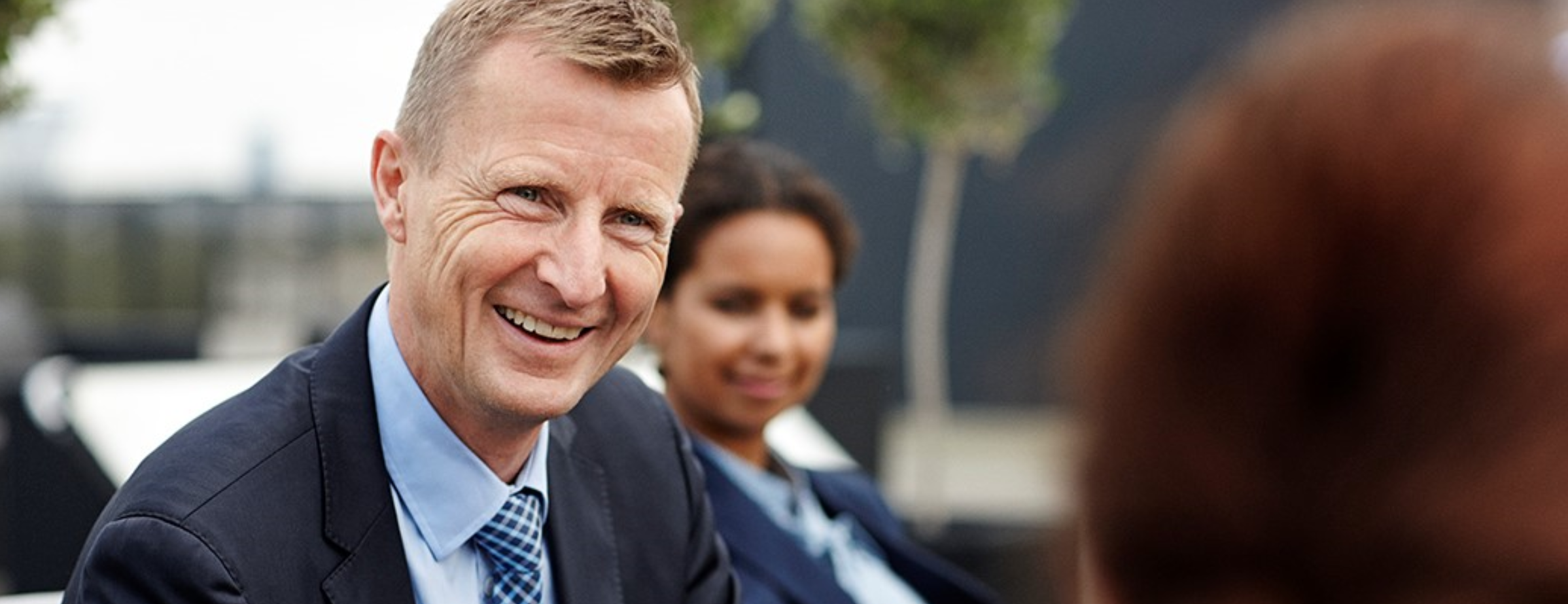
“It is all about reaching beyond boundaries to unite and advance and promote our community, internally within Microsoft and also externally,” he says. “We show people that we’re everybody’s company. No matter who you are, come as you are and do what you want. And love who you want.”
Microsoft has scored 100 percent in the Human Rights Campaign’s Corporate Equality Index each year for more than a decade. The company was an early leader in providing same-sex domestic partnership benefits and including sexual orientation in its corporate non-discrimination policy, as well as broadening its health benefits for transgender employees.
GLEAM was engaged and working to raise awareness as the company supported marriage and benefits equality for same-sex couples in U.S. Supreme Court cases, as well as more recent local cases, such as Microsoft’s support of a lawsuit against a Washington state flower shop owner for refusing to provide flowers for the wedding of two men.
Microsoft is among many companies that joined the Washington Won’t Discriminate campaign to oppose state Initiative 1515, a measure the campaign says would “repeal our state’s non-discrimination protections that for 10 years have helped ensure our transgender family members, friends, co-workers and neighbors are treated fairly and equally under the law.”
“Diversity & inclusion is a strength for Washington State. We’re joining @NoDiscrimWA to ensure everyone is treated equally. #NoOnI1515,” Microsoft President and Chief Legal Officer Brad Smith tweeted in April. The company has also opposed similar legislation in other states.
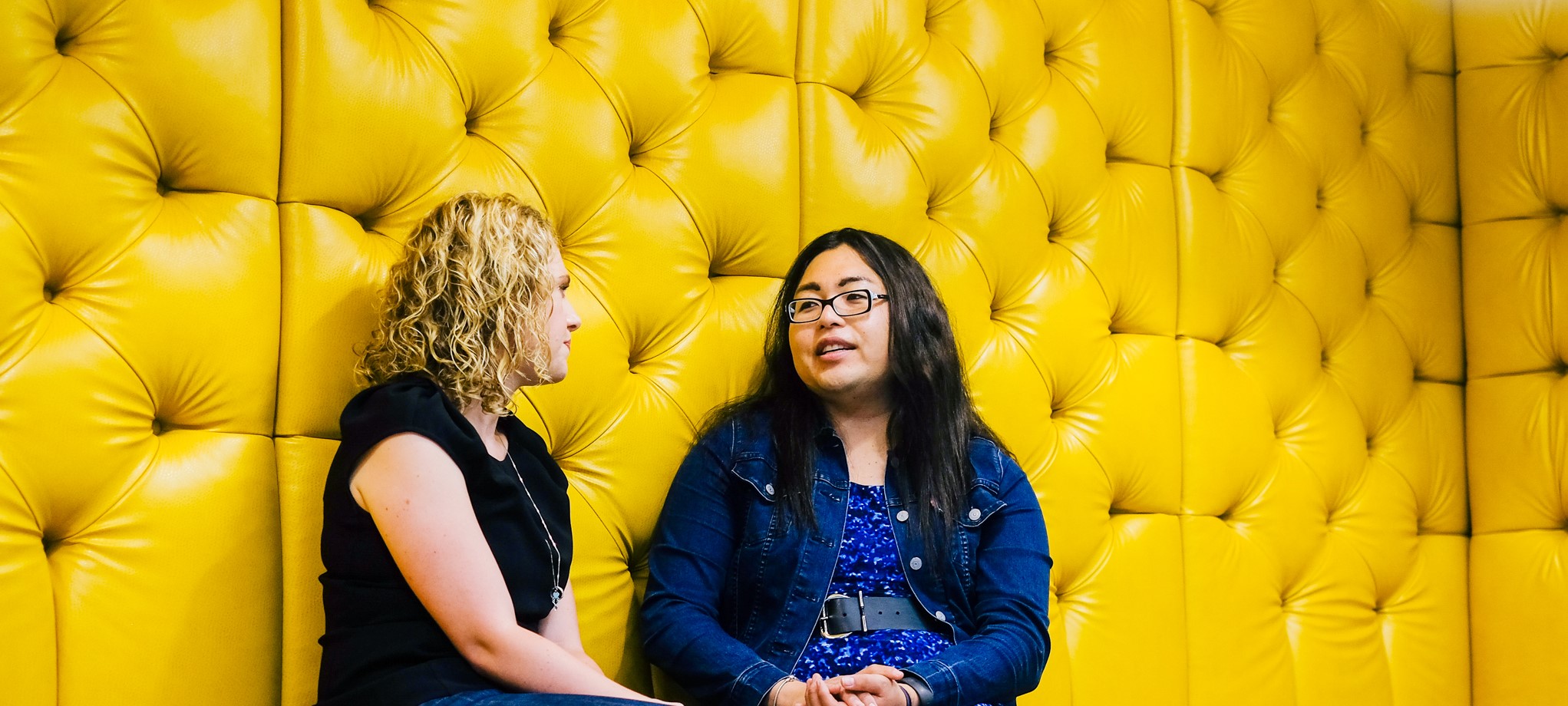
Microsoft’s decision to take a public stand on such issues is hugely important to Sophia Lee, a software development engineer for MSN. Lee joined GLEAM when she started at Microsoft in December 2013 and became more active with the group as she began her transition to her new gender role a year later.
GLEAM “is showing the rest of the world that everybody is accepted within the company,” Lee says. “It shows that the company is ethical and cares about social issues, and people in general.”
Lee and two other transgender GLEAM members started the Gender Expressions and Trans Discussion group, which is aimed at talking over issues and concerns, sharing advice and helping to educate others. She says Microsoft has been supportive throughout her transition, from providing health insurance that covered visits to a therapist before her transition to a manager who allows her to work a flexible schedule to accommodate medical appointments.
“Microsoft has been pretty wonderful, actually; I don’t know if there is a company in the world where it is better to transition,” she says. “The benefits that Microsoft has for transgender employees, the nondiscrimination policies, the general open-mindedness of the employees — all of that is really critical, and it really helps facilitate you being free to be who you are.”
Microsoft is such a leader in LGBT equality that she believes newer tech companies should “look at what Microsoft has done and use that as a template,” she says. “It’s widely known how accepting Microsoft is — and part of that is the employee resource group.”
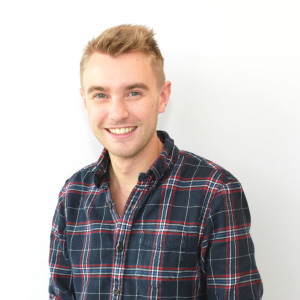
Tom Eddings, design lead for the Modern Apps team in the U.K., considers himself a fairly private guy who doesn’t broadcast that he’s gay but is open about the topic with colleagues when it comes up. He started attending GLEAM meetings to understand more about what the company was doing for the LGBT community.
This year, he brought his design skills into a more active role helping plan for London’s Pride parade. He helped design T-shirts that incorporate Microsoft’s logo with rainbow colors, a smiley face, the slogan “Be yourself with a smile” and the global hashtag #HelloPride.” He also helped create a diverse group of artistic cartoon characters — one sporting a rainbow cape — to adorn badges, posters and other Pride gear.
Eddings says his involvement isn’t just about design but also raising awareness about GLEAM and, ultimately, helping those who are unsure whether they can be themselves in a corporate environment know that there’s a support network there for them.
He believes one of the most powerful things GLEAM has to offer is promoting diversity, which he calls “absolutely critical” to the company.
“The best ideas come from diverse teams where people feel confident that they’re able to contribute their ideas to the process,” Eddings says. “That comes from having a diverse culture where people feel confident and don’t have to pretend to be someone they’re not.”

